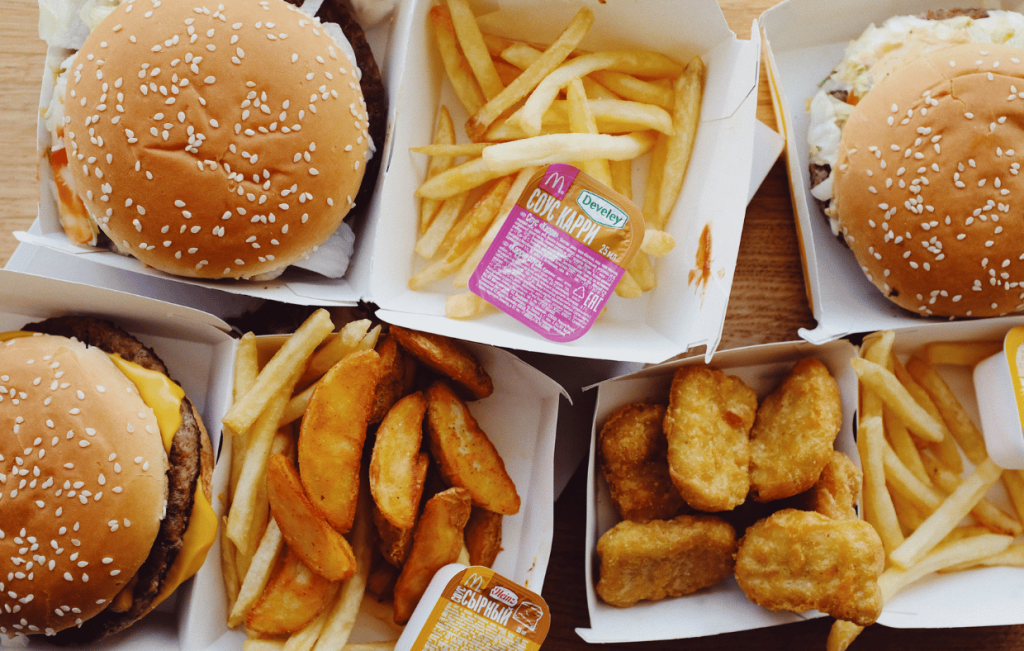Imagine eating your favorite foods—even peanut butter and chocolate—while losing weight. Thanks to intermittent fasting (IF), this dream is now a reality backed by research.
Intermittent fasting isn’t a diet but an eating pattern. It focuses on when you eat rather than what you eat, creating a natural calorie deficit without excessive restrictions. Its popularity has surged, with scientific studies confirming benefits such as weight loss, improved insulin sensitivity, and enhanced brain health.
Transform your body and boost fat-burning potential with the foods you love – claim your natural weight support today at this science-based resource.
Let’s explore how intermittent fasting works and the two most effective ways to lean out sustainably (i.e., eating almost anything you want, within reason, while still losing weight).

1. What Is Intermittent Fasting and How Does It Affect Your Body?
Intermittent fasting alternates between periods of eating and fasting. The goal is to enter a fasted state where your body switches from using sugar to burning fat energy stores, known as the metabolic switch.
By limiting your eating window, you naturally consume fewer calories, leading to fat loss. The approach matters less than consistency: whether it’s alternate-day fasting, time-restricted eating (16:8 diet), or 5:2 fasting, the concept remains the same—eat during a specific period and fast for the rest.
Types of Intermittent Fasting Protocols:
– 16/8: Fast for 16 hours, eat within an 8-hour window
– 5:2 Plan: Eat normally for five days, consume 500-600 calories on two days
– Eat-Stop-Eat: Fast for 24 hours once or twice a week
– Alternate-Day Fasting: Fast every other day (some variations allow 500-calorie meals on fasting days)
2. The Science Behind Intermittent Fasting: Potential Anti-Aging Effects
Peer-reviewed studies have shown that intermittent fasting effectively promotes weight loss, decreases insulin resistance, and lowers heart disease risk.
For example:
– One study found that men fasting for 16 hours daily lost more fat and maintained more muscle than those eating for 8 hours.
– Another study reported that participants on a 5:2 fasting schedule lost 8% of their body weight and experienced decreased cholesterol and blood pressure.
These results were achieved without forcing participants to deny themselves their favorite foods—they simply ate within a smaller window.
3. The Catch: Mindful Eating is Key

While intermittent fasting allows normal eating (including occasional treats) without derailing progress, moderation and mindfulness are crucial.
During eating periods, focus on:
– Lean protein (chicken, fish, legumes)
– Healthy fats (avocados, nuts, olive oil)
– Whole grains instead of refined ones
– Avoiding large meals that spike insulin unnecessarily
If hungry during fasting hours, drink black coffee, water, or herbal teas to curb cravings.
You can still enjoy pizza or cake on special occasions, but a balanced diet during your eating window is best for sustainable weight loss.
4. Calorie Balance for Weight Loss
Although intermittent fasting focuses on timing, calorie intake still matters. Overeating can slow weight loss.
To lose weight:
– Maintain a caloric deficit (burn more calories than you consume)
– A 500-calorie daily deficit typically leads to about 0.5kg (1lb) of fat loss per week
– Consult a registered dietitian for personalized calorie goals
Best foods during IF include:
– Salmon and fatty fish
– Greek yogurt
– Leafy greens
– Nutritious, high-fiber foods
5. Long-term Weight Management with Intermittent Fasting

Unlike restrictive diets that often fail long-term, intermittent fasting offers a sustainable approach by focusing on when you eat rather than excluding food groups.
Key Benefits of Intermittent Fasting:
– Promotes sustainable weight loss
– Decreases body fat without muscle loss
– Improves insulin sensitivity
– Lowers chronic disease risk
– Enhances mental clarity and focus while fasting
Many IF followers report reduced snacking habits and improved eating patterns.
6. Intermittent Fasting and Medical Conditions
Consult a healthcare provider before starting any fasting program if you have:
– Inflammatory bowel disease (IBD)
– Diabetes
– History of eating disorders
– Heart disease
While some research suggests IF may help regulate blood sugar, improve heart health, or enhance insulin sensitivity, individual health needs may require adjustments to the eating plan.
7. Setting Realistic Expectations
Success with IF comes from consistency and reasonable expectations. While rapid weight loss is unlikely, you’ll likely feel better, have more energy, and notice improved clothing fit.
Weight loss isn’t always linear. Focus on long-term trends and use various progress indicators:
– Waist measurements
– Before/after pictures
– Clothing fit
8. Optimal Fasting Duration

Individual responses to fasting duration vary. Most people do well with:
– 14-16 hours of fasting
– 8-10 hours of eating
Longer fasts may accelerate fat loss, but choose a schedule that fits your lifestyle. Even following the pattern 5 out of 7 days can be beneficial. This flexibility contributes to intermittent fasting’s growing popularity.
9. Combining Intermittent Fasting with Physical Activity
Exercise complements intermittent fasting well. In a fasted state, your body is primed to burn fat for energy, potentially making workouts more effective at targeting body fat stores.
Tips for exercising during IF:
– Complete cardio or strength training just before your first meal
– Stay hydrated during workouts
– Experiment to find what works best for you
– Listen to your body—some people thrive on fasted workouts, others don’t
10. Sample Intermittent Fasting Plan for Beginners
Time | Action
—–|——-
8:00 AM | Black coffee or herbal tea
10:00 AM | Light activity or walk
12:00 PM | First meal: grilled chicken, quinoa, vegetables
3:00 PM | Snack: apple with peanut butter
7:30 PM | Last meal: Salad with salmon, brown rice, steamed broccoli
8:00 PM | Begin fast
Feeding window: 12-8 PM
Fasting window: 8:00 PM – 12:00 PM the following day
This plan is easy to incorporate long-term and can help build good eating habits.
11. What to Expect from Intermittent Fasting
With consistency, many people experience:
– Visible weight loss within 2-4 weeks
– Improved energy and sleep quality
– Reduced cravings for sugar and processed foods
Remember, results vary. Your eating habits, chosen IF method, and ability to sustain the practice are more important than perfect adherence.
Conclusion: Effective Weight Loss Strategies
While not a cure-all, intermittent fasting is one of the most effective science-backed tools for weight loss, muscle preservation, cancer risk reduction, hormone balance, and chronic disease prevention. It simplifies life by reducing meal planning and allows your body to do what it’s designed for—burn fat for fuel.
To maximize your intermittent fasting results, combine it with:
– Mindful eating
– A variety of nutritious foods
– Regular physical activity
– Occasional guilt-free indulgences
For enhanced results and support for your body’s natural rhythm, consider a proven natural supplement. Discover one of the most reliable, scientifically-proven weight loss solutions:
👉 Explore Mitolyn’s demonstrated fat loss support here
Disclaimer: This article is for informational purposes only. While we strive for accuracy, we make no claims about the completeness or adequacy of the information. Consult a healthcare professional before starting any new diet or fasting plan.


